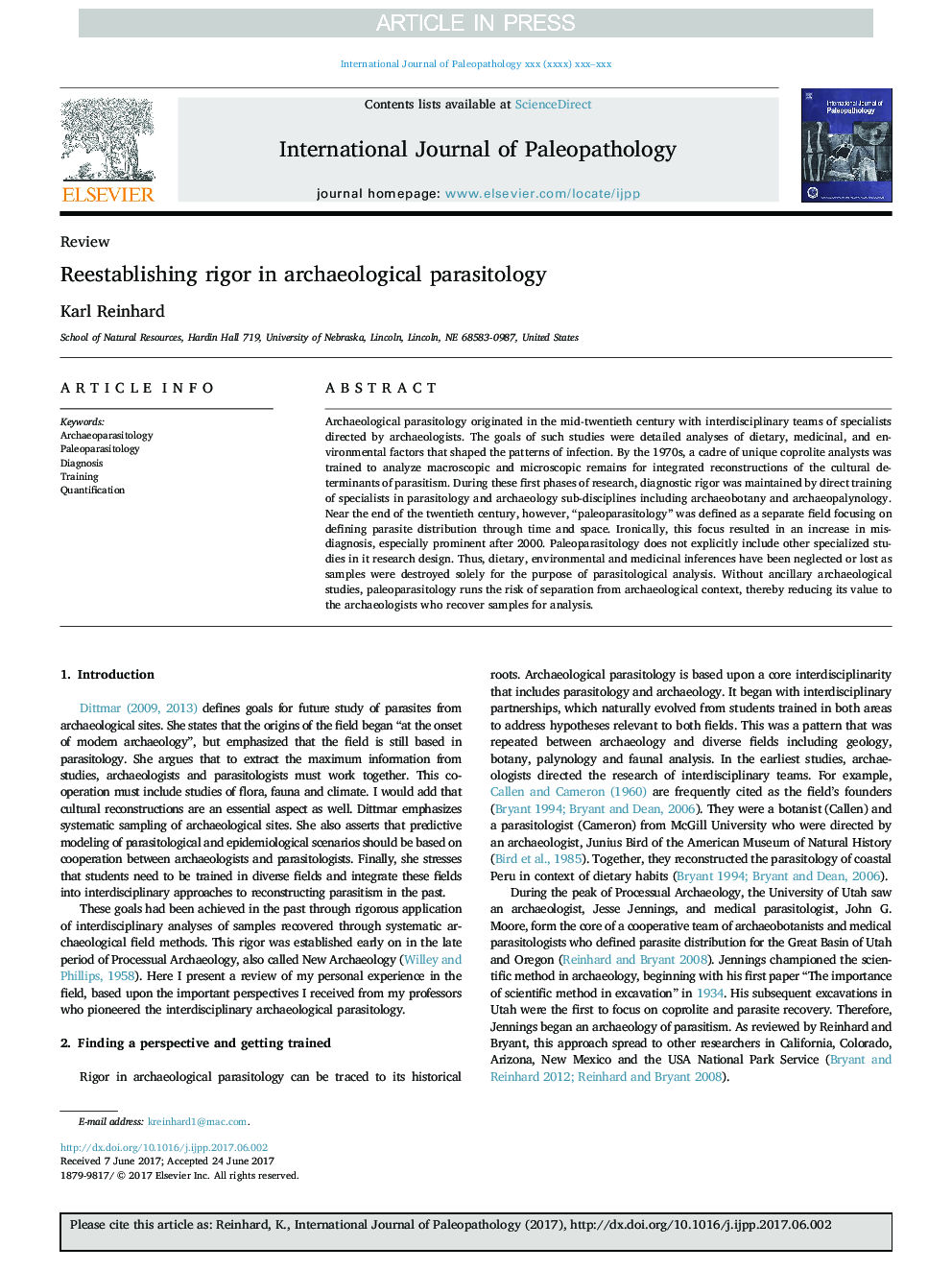| کد مقاله | کد نشریه | سال انتشار | مقاله انگلیسی | نسخه تمام متن |
|---|---|---|---|---|
| 6554810 | 1422372 | 2017 | 11 صفحه PDF | دانلود رایگان |
عنوان انگلیسی مقاله ISI
Reestablishing rigor in archaeological parasitology
ترجمه فارسی عنوان
بازگرداندن سختی در انگل شناسی باستان شناسی
دانلود مقاله + سفارش ترجمه
دانلود مقاله ISI انگلیسی
رایگان برای ایرانیان
کلمات کلیدی
موضوعات مرتبط
علوم زیستی و بیوفناوری
بیوشیمی، ژنتیک و زیست شناسی مولکولی
فیزیولوژی
چکیده انگلیسی
Archaeological parasitology originated in the mid-twentieth century with interdisciplinary teams of specialists directed by archaeologists. The goals of such studies were detailed analyses of dietary, medicinal, and environmental factors that shaped the patterns of infection. By the 1970s, a cadre of unique coprolite analysts was trained to analyze macroscopic and microscopic remains for integrated reconstructions of the cultural determinants of parasitism. During these first phases of research, diagnostic rigor was maintained by direct training of specialists in parasitology and archaeology sub-disciplines including archaeobotany and archaeopalynology. Near the end of the twentieth century, however, “paleoparasitology” was defined as a separate field focusing on defining parasite distribution through time and space. Ironically, this focus resulted in an increase in misdiagnosis, especially prominent after 2000. Paleoparasitology does not explicitly include other specialized studies in it research design. Thus, dietary, environmental and medicinal inferences have been neglected or lost as samples were destroyed solely for the purpose of parasitological analysis. Without ancillary archaeological studies, paleoparasitology runs the risk of separation from archaeological context, thereby reducing its value to the archaeologists who recover samples for analysis.
ناشر
Database: Elsevier - ScienceDirect (ساینس دایرکت)
Journal: International Journal of Paleopathology - Volume 19, December 2017, Pages 124-134
Journal: International Journal of Paleopathology - Volume 19, December 2017, Pages 124-134
نویسندگان
Karl Reinhard,
